Helen H. Moore's Blog, page 317
August 29, 2017
Stop saying the NFL can’t be racist because “70 percent of the players are black”

San Francisco 49ers quarterback Colin Kaepernick (Credit: AP/Marcio Jose Sanchez)
Recently I watched a painful exchange on Fox News between anchor Tucker Carlson and NAACP Atlanta Chapter Vice President Gerald Griggs about Colin Kaepernick’s future in the NFL. In this conversation, Carlson represented everything that is wrong with cable news. Don’t get me wrong, being condescending and snarky can be acceptable when your guest is a jerk, but not when he’s a really nice guy like Griggs. And to make matters worse, Carlson tried to speak intelligently about the NFL, African Americans and diversity — all topics that he clearly doesn’t understand.
“So you have a league that is 70 percent African-American. 70 percent of the players are black, as compared to about 13 percent of the population. So clearly, there is no racism in hiring,” said Carlson. “Here you have a guy who signed a contract in 2014 for like $126 million. Collected $39 million of that. Just on the basis of those facts alone, it’s hard to see how Colin Kaepernick, at 29, is a victim of racism. Tell me how he is.”
According to Tucker Logic, a team paying a very talented quarterback the rate that very talented quarterbacks warrant, along with many other black players, exempts them from being racist.
I guess Donald Sterling, the former owner of the Los Angeles Clippers, which was a predominately black team, wasn’t racist either, even though he was caught on tape making racist remarks about black people and why his girlfriend shouldn’t take pictures with them? When he said, “Yeah, it bothers me a lot you want to . . . broadcast that you’re associating with black people,” that was racist, no matter how many black players Sterling employed and paid handsomely. The decisions that have been made to shut Kaepernick out of league employment because of his high-profile anti-racism activism, despite the number of other black athletes employed by NFL teams, are racist as well.
Carlson doesn’t understand, or won’t acknowledge, that team owners only care about winning games. They don’t sign African-American players because they are black, they sign them because they are really fast and can jump out of the gym. Athletics has been one of the only pathways to social mobility, including to college, for black people as a whole in this country, so we take sports seriously, as excelling in athletics can be a matter of life or death for us. We don’t all get the opportunity to reject facts on cable TV for a living.
“Now maybe the owners are making a poor decision in not picking up Colin Kaepernick,” Carlson continued. “I’m not qualified to assess that and I doubt you are either.”
“What makes you suspect it’s racial?” he asked. “Again, the league is 70 percent black. If anything, it seems like it might be able to use a little diversity. I mean, that’s not — I mean, how is that racism? I’m honestly confused.”
Carlson needs to learn that Kaepernick’s employment shut-out is racist because his lack of a job has nothing to do with skill, as he has the 17th best quarterback rating in the league. Again, usually team owners only care about winning; however, in this rare case, it’s clear Kaepernick is being punished because he took a stand against the many racist systems in our society. He’s truly brave. I wish I could say the same about Carlson, the owners who are blackballing Kaepernick and the NFL who aren’t standing behind him.
Fox News yanked off British airwaves
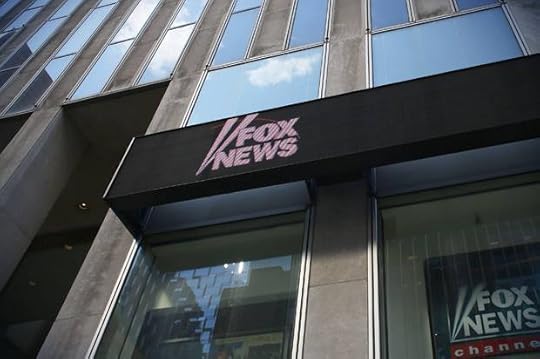
(Credit: Getty/Spencer Platt)
Rupert Murdoch’s Fox News is being yanked off the air in the United Kingdom after the right-wing news channel was unable to generate adequate ratings after 15 years on the air.
The Guardian reported that 21st Century Fox, the cable news networks parent company, made the announcement on Tuesday.
“Fox News is focused on the U.S. market and designed for a U.S. audience and, accordingly, it averages only a few thousand viewers across the day in the U.K.,” 21st Century Fox said in a statement. “We have concluded that it is not in our commercial interest to continue providing Fox News in the U.K.”
The decision was not connected to Fox’s $15 billion bid to takeover Sky, which is the top pay television provider in the U.K., according to CNN. In June U.K. culture secretary, Karen Bradley, said that “she was likely to refer 21st Century Fox’s purchase of Sky for an additional review, setting the merger up for many additional months of delays,” CNN reported. Britain’s Competition and Markets Authority would carry out the supplemental review. The Murdochs already hold an enormous grasp on British media, as they own three major tabloid newspapers: The Sun, The Times and The Sunday Times. Bradley expressed concern that the takeover of Sky would give the Murdochs too much power, CNN reported.
While U.K. media regulator Ofcom found the Murdochs to be “fit and proper” to hold a broadcast license, a plethora of recent controversies at the network resulted in some concern. Sexual harassment allegations faced by former Fox News executive Roger Ailes, as well as host Bill O’Reilly revealed “significant failings of the corporate culture” and the behavior was found as “deeply disturbing,” CNN reported.
Though Fox has attempted to distance itself from workplace scandals and correct some of its culture issues, controversies have continued. Earlier this month the network suspended host Eric Bolling after he was accused of sending lewd pictures of himself to female colleagues, unsolicited.
The final Fox News broadcast in the UK was aired at 4 p.m. local time on Tuesday.
Hate speech: What’s the protocol for dealing with it at work?
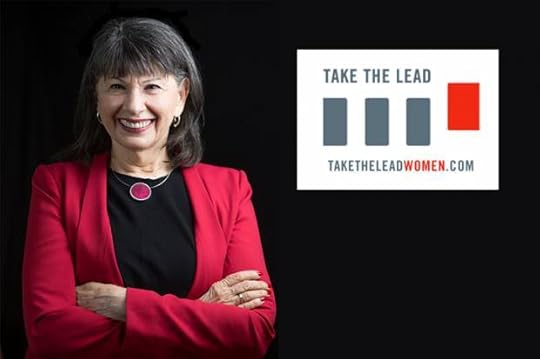
The topic and trauma of hate speech has been an ever-present conversation since Donald Trump was elected president. Where is the line where freedom of speech ends and hate speech begins? It’s a debate that turned violent in Charlottesville and certainly has felt emboldened by our president, particularly as he’s commenced on the campaign trail. But as political divisions feel more stark than ever, that hostility often trickles into the workplace.
Gloria Feldt is the president and co-founder of Take the Lead, a nonpartisan and non-profit organization that helps workers and managers address hate speech at work. She talked with Salon’s Alli Joseph about how CEOs and managers can use leadership skills to address the increase and prevalence of hate speech.
Here are some highlights from their conversation. Watch the video for more addressing hate speech in the workplace.
On being clear on values in the workplace and creating a protocol for dealing with those who engage in hate speech at work:
It’s really important for everybody to start with a real clear understanding of who am I? What are my values? And then, to understand that when somebody’s speech offends us, it’s not about us, it’s about them. It’s about what they believe, and we shouldn’t fear it. We shouldn’t back off because we may believe something different. We should be able to have civil conversations about those differences. So, that’s where we can begin and that’s where leadership in an organization makes such a huge difference. Ironically, it takes approximately the same leadership skills to either call people to their higher selves or to have them descend to their most base, ugliest parts of the human capacity for meanness.
On the increase in hate speech:
I think what is happened right now, is that it is reaching proportions that actually touch everybody in our society. I personally have experienced plenty of hate speech in the past. Having been an activist for women for many years, I can tell you that as soon as you’re out there promoting women’s rights, you start getting trolled by some pretty obnoxious folks. I’ve been picketed at my home. I’ve had death threats. So this is not new, this is definitely not new. But I think what is new and what is frightening—and I’m just going to say it straight out here—is I think we have a political situation in which there has been permission given. The controversy that has erupted around this increase in hate speech is that more people are stepping up. People are counter-demonstrating and there also more stepping up to say ‘no, actually we don’t want to be like that.’
Timothy Snyder explains how Charlottesville fits in Trump’s nightmare America
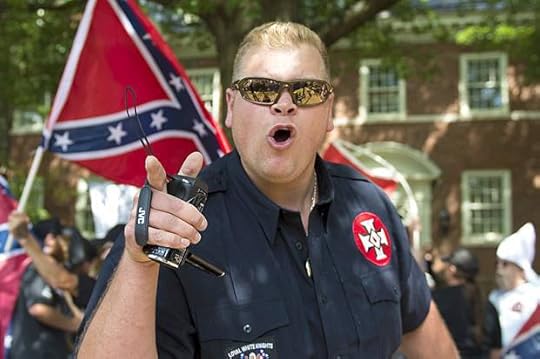
A member of the Ku Klux Klan shouts at counter protesters during a rally, calling for the protection of Southern Confederate monuments, in Charlottesville, VA (Credit: Getty/Andrew Caballero)
Donald Trump is an American fascist. This is no longer conjecture or the sum conclusion of anecdotal evidence. It is a plain fact that Donald Trump proves true almost every day.
Donald Trump provides aid and comfort to white supremacists and Nazis. Donald Trump has pardoned Sheriff Joe Arpaio, a man who, for many years, systematically violated the human rights of Latinos and Hispanics in the latter’s own self-described “concentration camp.” Donald Trump continues to assail the news media as enemies of the people. Donald Trump also continues to encourage violence against his political enemies. Donald Trump’s supporters continue to embrace his political extremism and fascist appeals. And according to recent polling, his core supporters are extremely racist and thus are much more likely to embrace Nazism and overt white supremacy than are Democrats and other voters.
In an effort to evaluate America’s political health and how it is responding to the fascist threat posed by Donald Trump and his supporters, I recently spoke with historian Timothy Snyder. He is an award-winning professor of history at Yale University and author of numerous books including “Bloodlands: Europe Between Hitler and Stalin” as well as “Black Earth: The Holocaust as History and Warning.” His newest book is “On Tyranny: Twenty Lessons from the Twentieth Century.”
In our conversation, Snyder explains how the white supremacist terrorism in Charlottesville could potentially fit into Trump’s plans for authoritarianism in America, if Charlottesville was a “Reichstag Fire” moment, and how the rule of law is threatened by Trump’s regime.
Professor Snyder also explained the historical antecedents and disturbing echoes of the white supremacist and neo-Nazi hate festival in Charlottesville relative to their origins in Nazi Germany.
“The right-wing marchers in Charlottesville were carrying torches, which is an imitation of Nazi methods. They were chanting anti-Semitic slogans. They were chanting ‘blood and soil,’ which is a foundational concept of Nazism. Mr. Trump is kind of saying that the Nazis are one side and then everybody else is the other side. What that does is it promotes Nazism. In effect, Mr. Trump’s statements are recruiting people to it. Because now the president is saying, ‘Well, that’s one side of the conversation.'”
During this week’s episode of the podcast, political scientist Cedric Johnson stops by to share his thoughts about Kathryn Bigelow’s new movie “Detroit,” as well as the problematic racial politics of the much-praised film “Get Out.”
You’ll also hear my thoughts about those people who are still somehow surprised by Donald Trump’s fascism, and I explain how today’s black conservatives are a modern day version of the black folks who helped the Ku Klux Klan in the American South after slavery.
The Trump administration just put Ronald Reagan alongside Eugene Debs in its Labor Hall of Honor
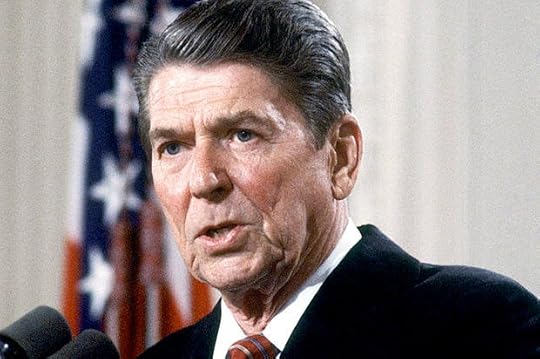
(Credit: Associated Press)
On Thursday, Labor Secretary Alexander Acosta announced that former President Ronald Reagan will be entering the Labor Department’s Hall of Honor, joining the ranks of luminaries ranging from Mother Jones to Eugene Debs.
In his announcement, Acosta cited Reagan’s tenure as the president of the Screen Actors Guild, along with a series of personal anecdotes, to explain that the Gipper was a friend of the working class. However, one does not have to be a history scholar to understand that Reagan was in fact an enemy of organized labor throughout his presidency.
To start, we can look to his firing of over 11,000 air traffic controllers in 1981. “More than any other labor dispute of the past three decades, Reagan’s confrontation with the Professional Air Traffic Controllers Organization, or Patco, undermined the bargaining power of American workers and their labor unions,” Joseph A. McCartin, a professor of history at Georgetown University, wrote for the New York Times in 2011.
Reagan was enraged after thousands of air traffic controllers walked off the job — the result of the Federal Aviation Administration refusing to meet the bargaining demands of the Professional Air Traffic Controllers Organization. The union wanted a wage increase for controllers and a slightly shorter workweek. Reagan responded by firing the controllers when they refused to return to work.
Richard Wolff, a professor of economics emeritus at the University of Massachusetts, Amherst, claims that unions never really recovered from the blow Reagan delivered in 1981. “The labor movement until that time had come to believe that it was strong enough that, even if it had a rough battle, it could work a compromise and salvage certain basic safeties, such as not replacing people during the strike,” Wolff tells In These Times. “All of these conventions and assumptions were smashed.”
That was just the beginning. During the course of his presidency, Ronald Reagan became the most powerful union buster in the world. He stacked the National Labor Relations Board with officials who vehemently opposed unions, causing long-term damage to collective bargaining and workers’ rights in the United States.
After the air traffic controller debacle, corporations became emboldened and targeted unions with a new zeal, illegally firing workers for organizing with the knowledge that they could largely evade punishment under Reagan’s labor board.
Since the middle of the 1970s, union membership has dropped from 26.7 percent of the workforce to just 13.1 percent, and Reagan played a significant role in that decline.
Reagan’s attacks on unions, along with his pro-corporate economic policies, also had a major impact on the income of working-class Americans. Wages for the bottom 70 percent of American wage earners have been stagnant since around the time Reagan took office, according to the Economic Policy Institute.
Among other factors, this lack of growth can be attributed to the steady reduction in union membership, as well as anti-worker trade policies implemented under Reagan and successive administrations.
Reagan’s economic agenda was focused on pursuing policies that increased the wealth of the rich, including reducing the top income tax rate from 70 percent to 28 percent, while increasing the tax burden on the working and middle classes.
“By weakening the labor movement, Reagan certainly contributed to its inability to do better than keep stagnant wages,” Wolff says. “Whereas before Reagan, real wages had risen steadily across a 30-year period.”
To portray Ronald Reagan as a friend of the working class is not only fallacious — it is dangerous. If the Trump administration does indeed see the Reagan years as a model for its own policies, as seems to be the case, it’s likely that income inequality will continue to rise while U.S. workers continue to struggle for a decent standard of living and dignity on the job.
Can the media stop giving that white supremacist nobody a megaphone?

(Credit: Getty/imaginima)
After more than a year of glossy profiles and sexy photo spreads, the media is once again falling in love with a certain white supremacist dork who’s managed to bilk the press for more free PR than a Kardashian cousin.
We won’t mention his name or show his picture, because we don’t want to contribute to the very problem we’re criticizing, but for god’s sake, please stop giving free press to this man.
CNN dedicated an entire segment to the nazi dork in April. TNT, in its ill-advised discussion on race by Charles Barkley, did so in May. Since the white supremacist attack in Charlottesville two weeks ago, this same idiot has been given coverage in The Hill, Israeli television, ABC News, NPR, and the New York Times which, in a now deleted tweet insisted we “read about an NYT reporter’s conversation with [the white supremacist dork] in this week’s Race/Related newsletter.”
All seemingly in an effort to get their “side” of the story, as if the issue of people’s baseline humanity is a breezy policy difference worthy of debate.
ABC’s Nightline sat a random antifa “representative” down across from the white supremacist dork at a picnic table to hash out their differences. Again, the presumption is that a pro-eugenics, pro-genocide position is somehow on the same moral plane as those who oppose eugenics and genocide, or that there’s something to be gained by talking things out.
This comes after a torrent of Teen Beat-like profiles in the leadup to the 2016 election in Mother Jones, the Washington Post, and the LA Times.
What’s the point of all of this? What goes through an editor’s or producer’s head when, in the wake of a neo-Nazi terrorist attack, they reach out to a neo-Nazi for comment? The pathological “both sides”-ism that infects our journalist class is uniquely unsuited for these times. Much like NPR’s institutional refusal to call Trump’s most egregious lies lies or the New York Times’ desire to contrive good in Trump’s first 100 days, the desire to seek out white supremacist voices on the subject of white supremacist violence is at best, morally negligent, and at worst, fascist propaganda.
The “debate” ought to be, “What’s the best way to combat these forces?” not “Hmm, what makes neo-Nazis tick?”
A similar phenomenon occurred in the build-up to the war against ISIS, where the media mindlessly replayed ISIS snuff videos on loop for over two years, serving as a primary distributor of its propaganda. In a rush to rack up sensationalist clicks, no one in these media organizations stopped to ask what part they played in ISIS recruiting efforts. The following of radical imam Anjem Choudary doubled in less than four months after he was featured nonstop on print and cable media.
Just the same, the white supremacist dork’s follower count on Twitter has gone from under 6,000 to 73,000 in the year and a half since the mainstream media decided to make him the poster child for sexy, bad boy hatemongering.
This isn’t to say white supremacists should be ignored. It’s important the media highlight their scope and growth and the danger they pose. What isn’t needed, however, are glossy, sympathetic profiles of their self-appointed leader or to treat them as simply one side of an ongoing debate in urgent need of media parity.
Do coal and nuclear need a helping hand? 5 essential reads

FILE - In this April 4, 2013, file photo, a dragline excavator moves rocks above a coal seam at the Spring Creek Mine in Decker, Mont. President Trump's latest move to support coal mining is unlikely to turn around the industry's prospects immediately. Experts say the biggest problem faced by the mining industry today isn't a coal shortage of coal or even the prospect of climate change regulations, but an abundance of cheap natural gas. (AP Photo/Matthew Brown, File) (Credit: AP Photo/Matthew Brown, File)
The following is a roundup of previously published articles.
The U.S. electricity grid, the sprawling network that delivers power to our homes and businesses, is changing rapidly — a point few experts will debate. But how policies should guide the future of the grid — and specifically which fuel sources should be used — is a highly contentious question.
Department of Energy Secretary Rick Perry in April asked DOE staff to prepare a study, which was released on August 24, to assess the electricity markets and its reliability. News of the review caused great trepidation among solar and wind advocates because Perry had singled out the importance of nuclear and coal — a favorite of President Trump — in maintaining grid reliability.
In the end, the study said the sharp decline in natural gas prices over the past decade is the primary reason coal has become less economic, rather than the spread of wind and solar. The report also found that wind and solar, which provide power intermittently, have not caused any insurmountable problems in the grid’s functioning — yet.
Lessons from Texas
Reactions to the report’s release have been mixed, and it’s not clear what policies might follow from it. But academics have written extensively about the dramatic changes happening behind the scenes on the grid. Most notably, four energy experts from the University of Texas looked at what happened when wind energy surged on the Texas grid, known as ERCOT — much of it during Perry’s time as governor.
Wind power did not crash the Texas grid because the state reformed how it operates its wholesale energy markets, they said. Yes, grid operators need to rely more on natural gas plants to compensate for varying wind and solar, but the wholesale price for energy has gone down. They wrote:
“Research at UT Austin shows that while installing significant amounts of solar power would increase annual grid management costs by $10 million in ERCOT, it would reduce annual wholesale electricity costs by $900 million. The result of all this is that renewables compete with conventional sources of power, but they do not displace nearly as much coal as cheap natural gas. In fact, cheap gas displaces, on average, more than twice as much coal than renewables have in ERCOT.”
Nuclear power plant operators cheered the DOE’s report because it noted the crucial role of nuclear in the current grid and recommended faster reviews for new plant construction. But should the federal government provide subsidies, as New York has done in one case, to keep nuclear power plants in operation?
Nuclear engineering professor Arthur Motta argued that policies should recognize the fact that nuclear power is reliable and emits no emissions during operation.
“Subsidizing carbon-free sources is justifiable to provide for the future greater good of the country because they provide climate change and clean air benefits. Perversely, however, the U.S. Environmental Protection Agency and most states have declined to consider rewarding the same benefits from existing nuclear power plants.”
On the other hand, Peter Bradford from the Vermont Law School and a former Nuclear Regulatory Commission member said that nuclear has always struggled to be economic, and policies to favor nuclear will cost consumers. He wrote,
“Nuclear power producers want government-mandated long-term contracts or other mechanisms that require customers to buy power from their troubled units at prices far higher than they would pay otherwise. Providing such open-ended support will negate several major energy trends that currently benefit customers and the environment.”
Careful planning
The stated rationale behind the study was that the U.S. grid needs to ensure it has “baseload” power sources that can operate around the clock, as nuclear, coal and natural plants can. And the DOE study does note that it’s worth studying what happens with a deeper penetration of solar and wind because they could cause reliability issues in the future.
California is on the vanguard of this change. When it shut down its last nuclear plant, UCLA researchers Eric Daniel Fournier and Alex Ricklefs explained that the state will need a number of techniques, including energy storage, to meet its aggressive renewable energy targets. They wrote,
“Careful planning is needed to ensure that energy storage systems are installed to take over the baseline load duties currently held by natural gas and nuclear power, as renewables and energy efficiency may not be able to carry the burden.”
Meanwhile, the future of coal still does not look particularly bright — at least in the U.S., wrote Lucas Davis from University of California Berkeley. He wrote,
“This dramatic change has meant tens of thousands of lost coal jobs, raising many difficult social and policy questions for coal communities. But it’s an unequivocal benefit for the local and global environment. The question now is whether the trend will continue in the U.S. and, more importantly, in fast-growing economies around the world.”
Martin LaMonica, Deputy Editor, Environment & Energy Editor, The Conversation
August 28, 2017
Statues of medical racist who experimented on slaves should also be taken down
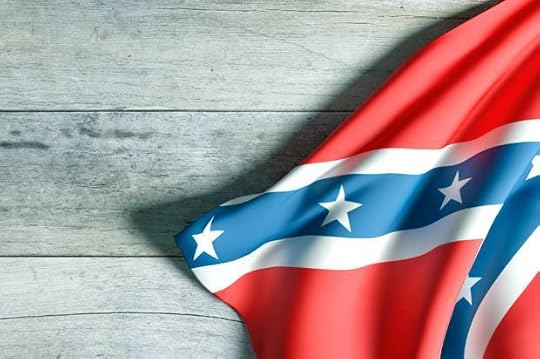
(Credit: GettyEnrique Ramos Lopez)
Confederate generals are not the only statues causing public outrage in the US. On Saturday, protesters gathered in New York City’s Central Park to call for the removal of a monument to James Marion Sims — the “father of gynaecology” — a doctor who bought, sold and experimented on slaves.
There are two other Sims statues on state-owned property. One is in Columbia, South Carolina, and the other in Montgomery, Alabama. In an interview with MSNBC, Steve Benjamin, the mayor of Columbia, recently agreed that the local Sims statue should come down “at some point”. Now the New York Academy of Medicine has reissued a statement supporting the removal of Sims’ effigy from Central Park.
Over the past five decades, a small army of academics — including social historians, feminists, African American scholars and bioethicists — have reached a consensus that Sims’ medical research on enslaved patients was dangerous, exploitative and deeply unethical — even by the standards of his times. And doctors at the Medical University of South Carolina, in Sims’ home state, have publicly acknowledged Sims’ overt medical racism.
The ongoing removal of statues that celebrate the Confederacy and other forms of white supremacy, is an opportunity to also correct the problem of Sims’ troubling presence on the symbolic landscape of America’s past.
Searching for victims
It is common knowledge that Sims was a slave owner during the years he practised medicine in Montgomery, Alabama. It is also well known that he performed dangerous experiments on enslaved women, men and babies. These experiments were so dangerous that even his friends and fellow doctors told him that he was going too far.
The evidence of Sims’ medical malpractice is apparent from the extensive published case notes of the procedures he performed and from his autobiography, The Story of My Life. In his autobiography, Sims revealed that the most “memorable era” of his life was between 1844 and 1849, during which he recollected that “there was never a time that I could not, at any day, have had a subject for operation”.
In same years, he doubled the size of his private hospital for enslaved patients, “ransacking country around” Montgomery for incurable cases of vesico-vaginal fistula (an abnormal tract between the bladder and vagina). Enslaved women were particularly prone to this side effect of childbirth, due to the coercive “breeding” practices of slave-owners and widespread sexual exploitation. For Sims’ fistula patients, the memory of these years would have been unbearable, as they were subject to repeated surgery, without anaesthesia.
Sims is a typical example of a slave-owning, slave-trading, racist medical researcher, of which there were an abundance in antebellum America. Medical experiments on the enslaved were commonplace throughout the era of slavery. Sims, however, proved particularly shrewd in having positioned his medical practice and backyard private hospital at the heart of Montgomery’s booming slave-trading district.
Sims’ hospital and medical research thus directly serviced the slave trade. He attempted to patch up the chronically sick so that they could continue to labour, reproduce, or be sold at a profit to their owners. This was yet another means by which the institution of slavery enabled white racist capitalists to increase their wealth and reputations. Sims’ key role in the cruel business of human trafficking only adds to the urgent need to rethink all of his memorials.
Untold horrors
The latest chapter of Sims’ legacy is still unfolding, with an important new academic study about to be published. Further, Sims’ public history reveals much about patterns of racism, paternalism and sexism — as well as changing attitudes towards slavery, doctors, patients and disease — in the eras of Jim Crow segregation, eugenics, World War II, civil rights and beyond.
Two historians of American medicine, Vanessa Northington Gamble and Susan Reverby, who battled long and hard to bring to light the truths of the Tuskegee syphilis experiment and secure a presidential apology and compensation for the study’s victims, have argued for the Sims monuments to be reconfigured, perhaps removing his likeness and incorporating the stories of his enslaved research subjects.
As the history of patients is still in its infancy and very few statues commemorate the participants in medical trials, this debate may be a stimulus for more inclusive and considerate memorialisation. And it may prove useful in drawing attention to the ethics of research today, a time of rapid developments in biomedicine.
 Accompanying the removal or reconfiguring of the Sims’ monuments, there also needs to be a thorough re-evaluation of medicine in the age of slavery and Jim Crow, as there are countless untold stories of exploited and oppressed sufferers to be brought to light and included on history’s balance-sheet for justice, inclusion and reparations.
Accompanying the removal or reconfiguring of the Sims’ monuments, there also needs to be a thorough re-evaluation of medicine in the age of slavery and Jim Crow, as there are countless untold stories of exploited and oppressed sufferers to be brought to light and included on history’s balance-sheet for justice, inclusion and reparations.
Stephen Kenny, Lecturer in 19th and 20th-century North American History, University of Liverpool
If this is a civil war, pick a side: Donald Trump, white nationalism and the future of America
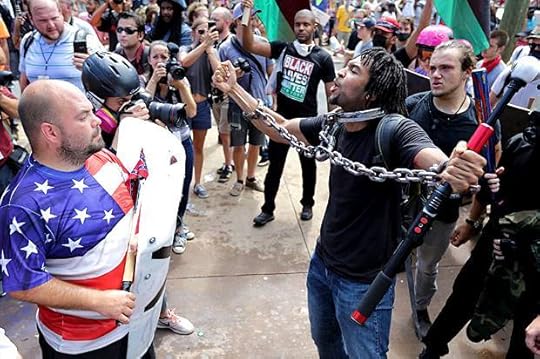
White nationalists, neo-Nazis and members of the "alt-right" exchange insluts with counter-protesters as they attempt to guard the entrance to Emancipation Park during the "Unite the Right" rally. (Credit: Getty/Chip Somodevilla)
Sometimes America feels like the movie “Groundhog Day:” a place where we keep waking up again and again to the same crap, hoping against hope that this time — no really, this time — things will be different.
So this time, the videotape of the police officer shooting the unarmed black teenager will lead to that officer’s conviction and imprisonment. And then the alarm goes off and we are awakened from our dream state, just like we were the time before and the time before, forced to reckon with a seemingly endless repetition of horribleness.
Or this time, as we watch tens of thousands of disproportionately black and poor people stranded in New Orleans during Hurricane Katrina, the nation as a whole will finally come to understand what those left behind had already known, and for a very long time: namely, that black lives really don’t matter, and won’t until we demand they do. Again, the alarm disturbs our slumber. And again, we hit the snooze button.
Or this time, when yet another white kid shoots up his classroom, or another white serial killer murders a dozen people, buries them under the house or cannibalizes them, we will have our eyes opened to the fact that pathology and deviance are far from the exclusive purview of persons of color. So too when rich white men nearly bring the economy to its knees with financial chicanery so egregious as to make the most industrious of black or brown street criminals seem like rank amateurs by comparison. But then comes the alarm, a clarion that shakes us from our stupor, allowing us to go right back to fearing the usual suspects all over again.
And now, with the white supremacist terrorist attack in Charlottesville, we hope that out of such a tragedy we may finally come to appreciate the sickness of racism, and the indelible stain still besmirching the soil and politics of our nation so many years on. But in order for people to learn, they typically require teachers who are qualified to lead them to enlightenment. Events alone rarely do the trick and wisdom infrequently emerges fully formed from the well of good intentions, let alone fervent aspiration. Some assembly is required.
Sadly, we are in a classroom, so to speak, being taught by a man lacking even the most rudimentary pedagogical skills, devoid of content knowledge, and without the temperament to convey even the most obvious of lessons. A lesson one might think we had learned by now, but no: namely, that white supremacy is a death cult — a truth attested to by the bodies of millions of people of color through the years, not to mention several hundred thousand whites who died fighting that cult or defending it, from the Civil War to World War II. This cult cannot be accommodated. It cannot be excused. It must be condemned and it must be defeated as a mentality, as a movement, and as a structurally ingrained social and economic reality. And if its adherents cannot be deprogrammed, then they must be defeated, without the least bit of sentimentality.
But the teacher does not understand the lesson, and so here we are. Instead, he has reverted to type, providing succor to the most extreme elements of the far-right fringe. Whether for reasons of true affinity, or the perception that such forces represent a substantial portion of his base without whom his approval ratings would fall even further, or because condemning them forthrightly would appear to him — a man who apologizes for nothing and is loath to admit he has ever made a mistake — as weakness, matters not. The results are all the same, no matter his intentions.
To say of those in the so-called “alt-right” who descended upon Charlottesville, that “not all” of them were white supremacists, and that there were “some very fine people” among them, as Trump claimed, is to miss the point by such a wide margin that it calls into question whether this man is even remotely in charge of his faculties. Even if one were to allow that some among them were not Nazis, not supporters of organizer Richard Spencer’s calls for the creation of a “white ethno-state,” and not enamored of the rabid anti-Semitism that characterized the event from beginning to end, it was, after all, a rally to “Unite the Right.” In other words, to put aside whatever picayune differences might separate mere opponents of economic globalism from those who openly joke about pushing Jews into ovens, all in the name of reactionary solidarity.
It was an event intended to blur the very distinctions that the erstwhile leader of the free world would now have us make. It was an event to say, loudly and proudly, that among the right there should be no infighting, no rancor, no division. In short, it was an event intended to convey the message that even the ones who aren’t neo-Nazis are willing to make common cause with those who are. As the Proud Boys — a mostly misogynistic group dedicated to “Western chauvinism” — have put it, there should be no “punching right,” among their side’s members. They are all one thing, not because I say so, but because they do.
Not fine people, let alone very fine people, but rather, rotten fruit from a poisoned tree.
If I were a fine person and found myself at a march where, to my shock and horror, neo-Nazis and other bigots were featured, and I could see them with their swastikas, and their National Socialist Movement banners, and I could hear them yelling “f**k you faggots” at clergy and other peaceful protesters and hurling racial slurs about blacks, and chanting “blood and soil” (the direct English translation of a Nazi slogan), I would immediately leave, taking with me my profound embarrassment at having been so misled, so duped into believing this was just going to be a nice rally for conservative principles. That is what a very fine person would do, and even then, only after having ripped the swastikas from the hands of those holding them in disgust.
In fact, you know what “very fine people” would do to neo-Nazis? They would yell at them. They would defend themselves if need be. And yes, they might even mace them or punch them in the mouth. Very fine people detest Nazis. In fact, detesting Nazis might be a bona fide requirement — the de minimus definition — for being considered a very fine person.
This is not to say I always find the tactics of Antifa to be helpful or strategic, because I don’t. But to suggest, as the president did, that they are in some way the moral equivalent of those they were protesting — or perhaps even worse because at least the neo-Nazis had a permit! — is an act of moral inversion so putrid as to boggle the imagination. Whatever one thinks of Antifa tactics, there is simply a difference, and not a small one, between people who call for the purging of people of color and Jews from a nation, and those who fight back against people who call for those things. And if we say there is no difference between advocating genocide and oppression and resisting those who advocate genocide and oppression, then we are headed quickly to a place that puts equal moral condemnation upon the leaders of the Warsaw ghetto uprising as with those they were fighting. We are suggesting that the enslaved, who often resisted their owners violently, were no better than those who held them in bondage. We are suggesting that the kidnapped who slits the throat of her captor in the middle of the night is no better than the one who took her. And this is a perversion.
Keep in mind, the white supremacists said they would be coming to Charlottesville with weapons. Virginia is an open-carry state and they announced beforehand they would be prepared to take advantage of this fact, either for self-defense (their insistence) or to intimidate those who might stand against them. As such, and knowing that the fascists would be armed with guns, with knives, with clubs and other implements of war, for Antifa not to have brought something with which to fight back would have been to court an especially one-sided disaster. But however much mace stings and urine-filled balloons may stain one’s clothes, to suggest they are equivalent as tools of terror to semi-automatic weapons or vehicles is to confuse spit wads with atom bombs.
No, there is no left equivalent of Richard Spencer’s call for the ethnic cleansing — purging really — of non-whites from the U.S. There is no left equivalent of the Daily Stormer’s call for white supremacists to protest and disrupt the funeral of last week’s martyr, Heather Heyer. We do not march around campuses with torches shouting racist slogans, or surround our political adversaries — as the white nationalists did at UVA (very much without a permit, I might add) — and then wade into their numbers and beat them.
There has been a string of far-right murders since the election of Donald Trump, which has no left or progressive equal, and an even longer history of disproportionate reactionary terrorism with no parallel on the other side: at least 12 times as many fatalities and 36 times as many injuries from right-wing terrorists as from those who could potentially be considered “left.” And not merely because right wingers are more talented at their craft, but because there are simply far more incidents in play.
But these pesky facts — things most teachers seek to convey to their students — are mere trifles to the instructor in this case, who by his immunity to facts conveys a casual indifference to truth that cannot but deepen the roots of the present crisis. Committed to an alt-reality of his own making, the president sought to elide the differences between Robert E. Lee and Thomas Jefferson, as if calls for the removal of statues of the former would, by necessity, lead to calls for the removal of those in homage to the latter. In effect, he wondered, where will it end, all this political correctness, which seeks to erase historical figures from the national memory?
But confederate statuary is not intended as a history text, and those who erected it — mostly in the early 1900s, long after the war, and during a time when lynching and the reassertion of white supremacy in the South was at its zenith — never intended it to be so. These are altars of worship, where the faithful come to drink of the blood and taste of the flesh of their Great-Great-Grandpappy Beauregard, whose perfidy and characterological rot they still refuse to face. To defend these statues on the grounds of historical memory is perverse, for they misremember that history entirely and the cause for which Lee and others were fighting.
Yes, Thomas Jefferson was a slave owner, and this fact should be understood and not sanitized or considered a mere time-bound failing on his part (as it often is at the University of Virginia, for instance). But still, there is a difference between someone who said “all men are created equal” even if his actions suggested he didn’t mean it, and those who said (as did Confederate Vice President Alexander Stephens) that white supremacy was the “cornerstone” of their new government. One provided us with a flawed yet visible exit from the national nightmare in which he himself was implicated. The others — including leaders in the states who issued declarations of causes for their secession, and in each case named the maintenance of slavery as their purpose — would have extended that nightmare in perpetuity, and without hesitation. Whether Jefferson intended it or not, he gave us a blueprint, however blood-spattered, for building a functioning democracy. Lee and his cohorts had no interest in such things, nor the vision even to imagine them. And that matters.
When Southern whites made the choice to go to war with America they did so because however much racism had been embedded in the nation from the start, they didn’t find our commitment sufficient. And that’s saying a lot. They chose a side. It was a side of even more oppression, even more mistreatment than what the North had been helping dish out upon black bodies and upon indigenous peoples for many a generation by then. It is the same choice the white nationalists are making now. In a nation where they as whites already have half the unemployment rate of people of color, one-third the poverty rate and 12 times the median net worth of black and brown folks, they are choosing to go all in for even greater dominance, even greater hegemony. They look out at a nation beset by profound institutionalized inequities and rather than ask how we might fix them — or just shrugging and saying “oh well,” as so many are wont to do — are literally saying that those disparities are not large enough. As with the differences between Jefferson and Lee, this suggests some rather profound dislocations between white nationalists and most of the rest of us.
Or does it? Because see, now it is time for us to choose a side if we haven’t already, and to recommit to the fight. And by we, I mean those of us called white in this place. When David Duke and Matt Heimbach say that their movement is “speaking for white people,” they are trying to draft us into their army quite without our consent. When Andrew Anglin says this movement will “take over the country,” as he did this weekend, he is advocating the overthrow of the government. Yours. Mine. Ours. If you are white, and don’t resist this draft with every fiber of your being — if you don’t decide in fact to burn your draft card and insist that you will choose a different way to live in this skin — then you will have confirmed that they are right—that they do speak for you. And you will have revealed yourself as an enemy of all that is good about this land. Please know, history will not remember you well for it.
“Game of Thrones” post-finale: A little more pondering about “The Dragon and the Wolf”
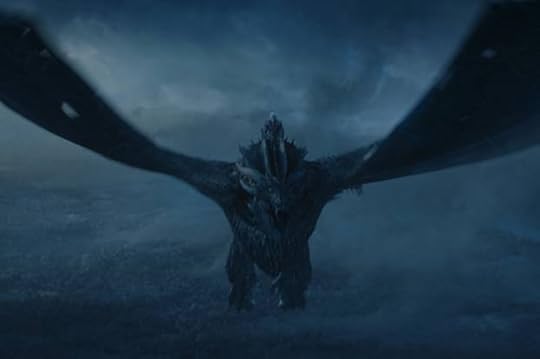
Vladimir Furdik as the Night King in Game of Thrones (Credit: HBO)
And now our watch has ended. For another year, anyway.
The seventh season of “Game of Thrones” was exciting, entertaining and exacerbating, often encompassing all of these reactions in the same episode. In the way of all great excursions, Sunday’s finale “The Dragon and The Wolf” flies by very quickly and gives rise to a number of questions that continue to hang in the air hours after the final credits roll.
Before we settle in for the figurative long winter’s nap between the seventh and eighth seasons of “Game of Thrones,” let’s endeavor to answer a few, make our best guesses about others, and take a moment to snicker at the icky joke of, “So . . . how’s your nephew?”
Now that’s out of our system. . .
What’s the deal with Jon Snow’s true name?
Thanks to the detective duo of Bran and Samwell Tarly, Winterfell’s version of “Simon & Simon,” the truth of Jon Snow’s parentage is no longer a secret, and that “R + L = J” theory has been confirmed. Handily Bran sent his brain back to the past to witness the secret marriage of Lyanna Stark and Rhaegar Targaryen and recalled that Lyanna whispered Jon’s birth name to Ned: Aegon Targaryen.
“He’s never been a bastard. He’s the heir to the Iron Throne. He needs to know,” Bran says in a voiceover. It’s true. Also, since he and Dany did A Dance with Dragons in her bed chamber, that news is bound to gross out the King in the North whose name is not Stark.
As for the significance of the name Aegon, Jon is now one in a line of eight starting with Aegon the Conqueror, the Targaryen who built the Iron Throne. In George R. R. Martin’s books Aegon Targaryen is secretly still alive, but like other characters it seems that his storyline has been absorbed into that of Jon Snow’s
Rhaegar also had a son named Aegon with his first wife Elia Martell, and while it’s weird to have the same name as one’s brother, Rhaegar may have viewed his issue with Elia as his starter kids.
Besides, boxer George Foreman named all of his sons George and they’ve managed to work it out.
Are Tormund Giantsbane and Beric Dondarrion still alive?
This is a question for which we have no definitive answer. Everybody’s favorite Wildling leader and the head of the Brotherhood Without Banners were part of the unfortunate team stationed at Eastwatch-By-the-Sea caught in the attack that took down that section of The Wall. And while many, many Wildlings fall in that terrible tumble, Tormund and Beric dash across the top of the barrier instead of attempting the long sprint down. Our last glimpse of Tormund shows him watching a compatriot running behind him tumble as the Night King’s zombie dragon destroys with a few sustained breaths.
But TV rules apply here: If we don’t see a body, we can’t be sure that anyone’s really dead. The larger question is how those two are going to descend from there. Like Beric says as the fateful scene opens, “It’s a long way down.”
What’s the deal with Viserion’s blue fire?
From the moment the Night King dragged Viserion’s body from that icy water beyond the Wall, viewers wondered whether he would become one of the ice dragon’s described in Old Nan’s tales to the children of Winterfell. Based on the ease with which zombie Viserion’s blue breath slices through the wall, the undead dragon doesn’t spit cold. If real world physics apply here, Viserion’s blue flame may be comparable to that of oxyacetylene torches, which would make his fire far hotter than Drogon’s or Rhaegal’s. Its effect on The Wall hints at that possibility.
Or it could simply be a fantasy version of fire with capabilities that we’ll have to wait a year to discover.
What is The Golden Company?
Mercenary armies as much a part of the landscape in Essos as the grass sea. The skill and quality of each, however, varies.
In Martin’s “A Song of Ice and Fire” books, The Golden Company is a group of elite sellswords, most of them heralding from Westeros. It was founded by Aegor Rivers, a bastard son of King Aegon IV Targaryen, and their motto, “Our word is as good as gold,” refers to their guarantee that they never break a contract.
According to Cersei, the series’ version the army is comprised of “20,000 men, horses, elephants I believe,” all secured on behalf of the Lannisters by the Iron Bank.
These disciplined mercenaries differ from the Second Sons, currently holding the Bay of Dragons in Daenerys Targaryen’s name, in that the Sons are recruited from throughout the Free Cities of Essos and comprised of men who are not the firstborn males in their families and stand to inherit nothing from their parents. So while the Second Sons may cross the Narrow Sea to support Dany’s cause, the Golden Company has a formidable reputation on par with the Dothraki and the Unsullied.
Will we see Littlefinger again?
Probably not. And, maybe.
Referring to the TV rule mentioned above, we did see Littlefinger die by Arya’s expertly wielding of the catspaw’s blade. But remember that Arya has a list, and Cersei is right at its top. Since Cersei plans to betray Daenerys and the North, the time may come that Arya decides to kill the snake by chopping off the head. If that happens Littlefinger has a better chance of getting close to the Iron Throne than a Stark ever could. And we’re guessing that nobody present in Winterfell’s great hall will be in a hurry to broadcast Petyr Baelish’s death, since there are much more pressing issues.
Family ties notwithstanding, can Daenerys and Jon work out in the end?
Sure, why not? Everybody loves a romance, even one between a nephew and aunt. Author V.C. Andrews based a series of hit books on such a scenario, in fact. Anyway, incest is a family tradition among the Targaryens; Dany is the product of the union between Mad King Aerys II and his sister-wife Rhaella, in fact. So the nephew-aunt situation might not be seen as disgusting as, say, the union of a brother and sister. In Martin’s world anyway.
If it’s a matter of contending for rightful succession, Jon might not even want the Iron Throne. He wasn’t exactly campaigning to be named King in the North, and it looks like Sansa has that handled. In that case it becomes a matter of pride — mostly Dany’s. As that sage named Lady Pat of House Benatar once observed, love is a battlefield.
We won’t know how that shakes out for a year at least, so why worry about it? Let’s savor the end of summer instead and try not to think about the fact that our Sunday nights are growing darker and, for the foreseeable future, destined to be “Throne”-less.





